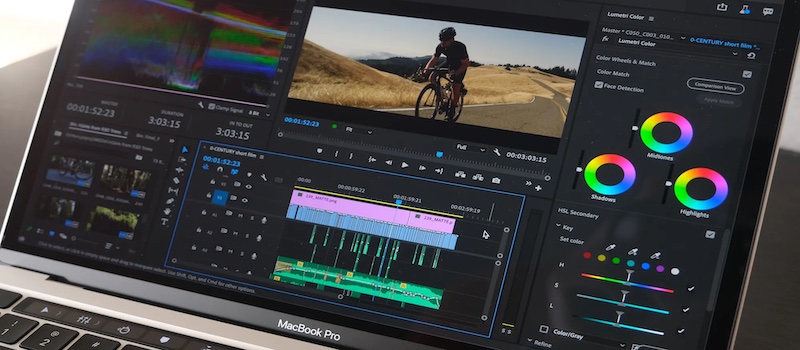Today Adobe unveiled 3rd-party performance benchmarks, The Pfeiffer Report, that shows side-by-side comparisons of Premiere Pro and other Creative Cloud tools on Intel vs M1-based Macs. This news comes as part of today’s updates across Creative Cloud, which includes native versions now shipping for Illustrator, InDesign, and Lightroom Classic for Apple’s M1 Macs. Premiere Pro’s M1 support, currently in beta, will be available soon.
Adobe’s contractor says that based on all benchmarks conducted, Creative Cloud is on average over 80% faster using the M1 system when compared to an identically configured Intel system. I’ve seen less stellar results flitting between Rosetta-emulated versions and native apps in beta.
You can also see an overview of the Premiere Pro results at Adobe in Premiere Pro Beta on Apple M1: The results are in. Adobe highlights some results for Premiere Pro’s performance:
- Marked improvements for import, playback and exports
- XAVC S 4K footage imports 187% faster
- Encoding to ProRes 422 was 129% faster
- Faster overall response times and performance
- Launch time 50% faster
- Open projects 77 percent faster
- Saving projects 168% faster
- Gradient wipe effect 90 percent faster
- Lens Flare effect 66 percent faster
- Next-level performance gains for optimized Sensei AI features for the Apple Neural Engine
- Scene Edit Detection 430% faster
- Improved efficiency and significantly longer battery life
After Effects testing results were not included, and it could be be awhile before we see apps with “normal” plug-in support on Apple Silicon systems, especially for After Effects (though the Rosetta 2 emulator/translator has worked fine for me). Plug-in developers face a double-whammy of developing for Apple Silicon and Multi-Frame Rendering, which requires changes to the SDK. Not that this matters too much given that Apple has yet to release higher end competitive models using Apple Silicon.
For progress on the After effects front, see Chris Zwar’s After Effects & Performance. Part 17: Interview with Sean Jenkin from Adobe, the first part of a larger discussion. Chris thinks MFR is “the most exciting new feature that After Effects has had in over 10 years.”
Also, there was a May 19 update on Multi-Frame Rendering from Adobe’s Sean Jenkins. In the current few weeks, they’ll be rolling out beta features, including rendering AE compositions in Adobe Media Encoder, Speculative Preview (automatically rendering in the background), and Render Queue Notifications. Here’s the Puget Systems interview on MFR:



